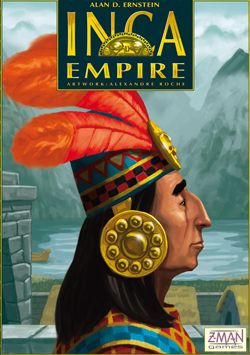Inca Empire (2010) Board Game
Inca Empire is a board game released in 2010 that takes players back to the ancient civilization of the Inca Empire. Designed by Alexandre Roche, the game allows players to experience the strategic decision-making and resource management skills needed to build and expand an empire.
Game Components of Inca Empire
How To Setup Inca Empire
To set up Inca Empire, players begin by placing the map, distributing the initial labor tokens, and setting up the Sun Board. Each player starts with a set of labor tokens and a few starting roads. The game includes several phases and components that need to be organized before the game begins, such as the Sun Cards and the building sites marked on the map.
Gameplay Mechanics and Game Objective
Player Experience
Playing Inca Empire is a strategic and interactive experience. Players must balance the construction of buildings for one-off victory points with the development of their road network for recurring scoring. The game features a rein-in-the-leader mechanism through event cards, where trailing players can penalize the leader. This dynamic requires players to think ahead and adapt to the actions of others. The game is rewarding but can feel scripted in the early stages due to the fixed sites for cities and garrisons. However, there is still ample room for smart play and strategic decisions.
Pros
Cons
Personal Thoughts on Inca Empire
Inca Empire is ideal for players who enjoy strategic, long-form games with a strong focus on empire building and resource management. It is particularly suited for fans of Euro-style games who appreciate the depth of planning and the interactive nature of the gameplay. However, it may not be the best choice for casual gamers or those who prefer shorter play sessions. The game’s complexity and long playtime make it more appealing to experienced board game enthusiasts who are willing to invest time and effort into mastering its mechanics.
We are supported by our audience. When you purchase through links on our site, we may earn an affiliate commission, at no extra cost for you. Learn more.

